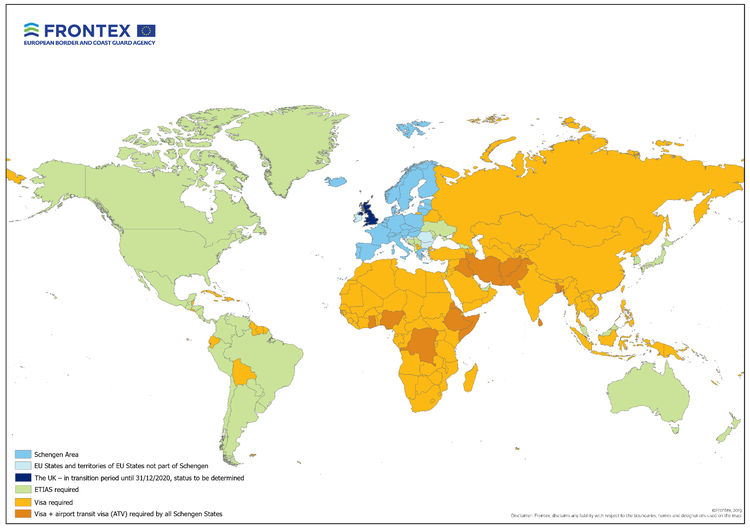
Brits and Americans Will Have to Pay €7 to travel to the EU
The rules of travel to Europe have changed. Starting in 2024, some 1.4 billion people from over 60 visa-exempt countries are required to have travel authorisation to enter most European countries. The ETIAS travel authorization is an entry requirement for visa-exempt nationals travelling to any of the 30 European countries listed below. It is linked to a traveller’s passport. It is valid for up to three years or until the passport expires, whichever comes first. If you get a new passport, you need to get a new ETIAS travel authorisation. travel to the eu
With a valid ETIAS travel authorisation, you can enter the territory of these European countries as often as you want for short-term stays – normally for up to 90 days in any 180 days. However, it does not guarantee entry. When you arrive, a border guard will ask to see your passport and other documents and verify that you meet the entry conditions.
The European Parliament passed the ETIAS Regulation on 5 July 2018. The adoption was formally confirmed by the Council of the EU on 5 September and officially signed by the two co-legislators on 12 September. It entered into force on 9 October 2018. The ETIAS legal framework is still in the course of completion with the European Commission’s Implementing and Delegated Acts. ETIAS is due to become operational in 2024.
Does the new EU visa waiver apply? travel to the eu
The new security measure affects people who do not live permanently in an EU country or don’t need a visa to stay in one.
Tourists, second-home owners, temporary workers or those visiting family or friends in the 26 Schengen zone countries should therefore take note.
The new ETIAS programme is being likened to the Australian ETA and the US ESTA visa waivers, both used for short-term stays.
The rules for those who require a Schengen visa – including the majority of citizens in Africa, Asia and South America – will remain the same.
How and when will this change travel for non-EU citizens?
The European Commission says this will have “minimal effect” on people travelling to Europe.
Eligible travellers will have to fill out an online application before they arrive, which costs €7 or is free to under-18s or over-70s.
It should take only a matter of minutes to fill out the form – which will require biometric passport information and travel details, as well as some basic security questions. But travellers are advised to apply at least 72 hours before they need it just in case of any delays.
Once your application has been approved it lasts for three years – which is good news for frequent travellers, although it must then be renewed. travel to the eu
Applying for an ETIAS travel authorisation
You can fill out the application form using either this official ETIAS website or the ETIAS mobile application. Applying for the ETIAS travel authorisation costs EUR 7, though some travellers are exempt from paying this fee.
Once you have applied
You will receive an email confirming the submission of your application which will include your unique ETIAS application number: make sure you keep this number for future reference.
Once your application has been processed, you will receive another email informing you about its outcome.
When you get your ETIAS travel authorisation, please make sure your name, passport number and other information is correct: if there is any mistake, you will not be allowed to cross the border. More information about what to do if you made a mistake in your application can be found here.
If your application is refused, the email will provide the reasons for this decision. It will also include information about how to appeal, details of the competent authority, as well as the relevant time limit to appeal.
- AIRHUB
-
eSIM for
Europe
34 countries
-
1 GB – 7 days – €2.99
3 GB – 30 days – €5.12
10 GB – 30 days – €11-09
- aloSIM
-
eSIM for
Europe
32 countries
-
1 GB – 7 days – €5.00
3 GB – 30 days – €13.00
10 GB – 30 days- €36.00
- GigSky
-
eSIM for
Europe
36 countries
-
1 GB – 7 days – €6.99
3 GB – 15 days – €11.19
10 GB – 30 days – €27.99
- iRoamly
-
eSIM for
Europe
39 countries
-
1 GB – 7 day – €6.83
3 GB – 15 days – €10.24
10 GB – 30 days – €18.77
- Maya Mobile
-
eSIM for
Europe
34 countries
-
1 GB – 7 days – –
5 GB – 15 days – €5.99
10 GB – 30 days- €13.99
- NOMAD
-
eSIM for
Europe
36 countries
-
1 GB – 7 days – €4.71
3 GB – 15 days – €10.27
10 GB – 30 days – €15.41
- UBIGI
-
eSIM for
Europe
29 countries
-
500 MB – 1 day – €2.00
3 GB – 30 days – €8.00
10 GB – 30 days – €19.00
- VOIA
-
eSIM for
Europe
34 countries
-
1 GB – 7 days – €2.69
3 GB – 15 days – €5.05
10 GB – 30 days- €11.70
The Best eSIM Finder brings together 100+ providers in one place, giving you a clear view of everything from data limits and business options to tethering, crypto payments, coverage, travel extras, refund policies, discounts, and reviews—so you don’t just compare plans, you understand which one truly fits your needs. Start exploring today and find the plan that fits you best.



















